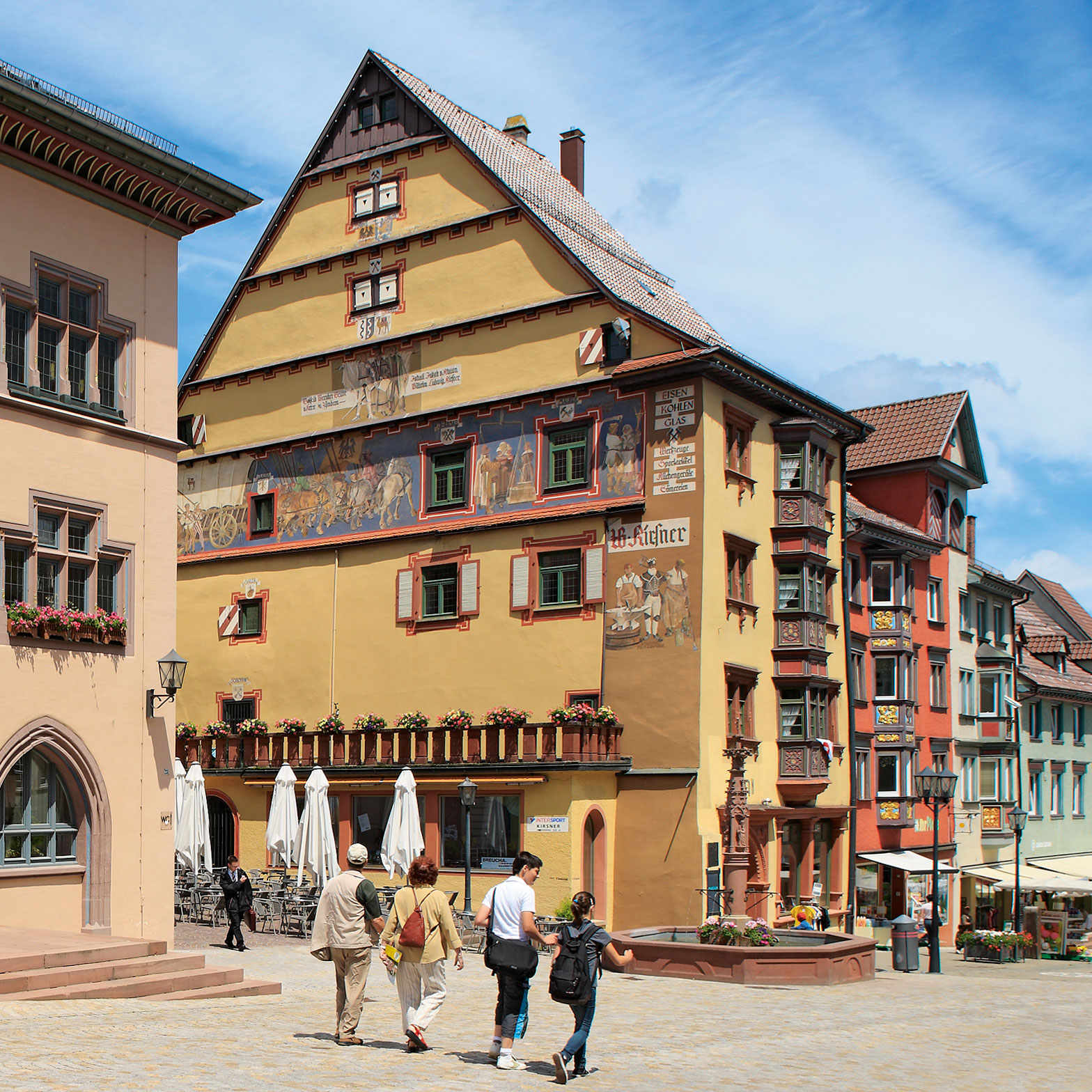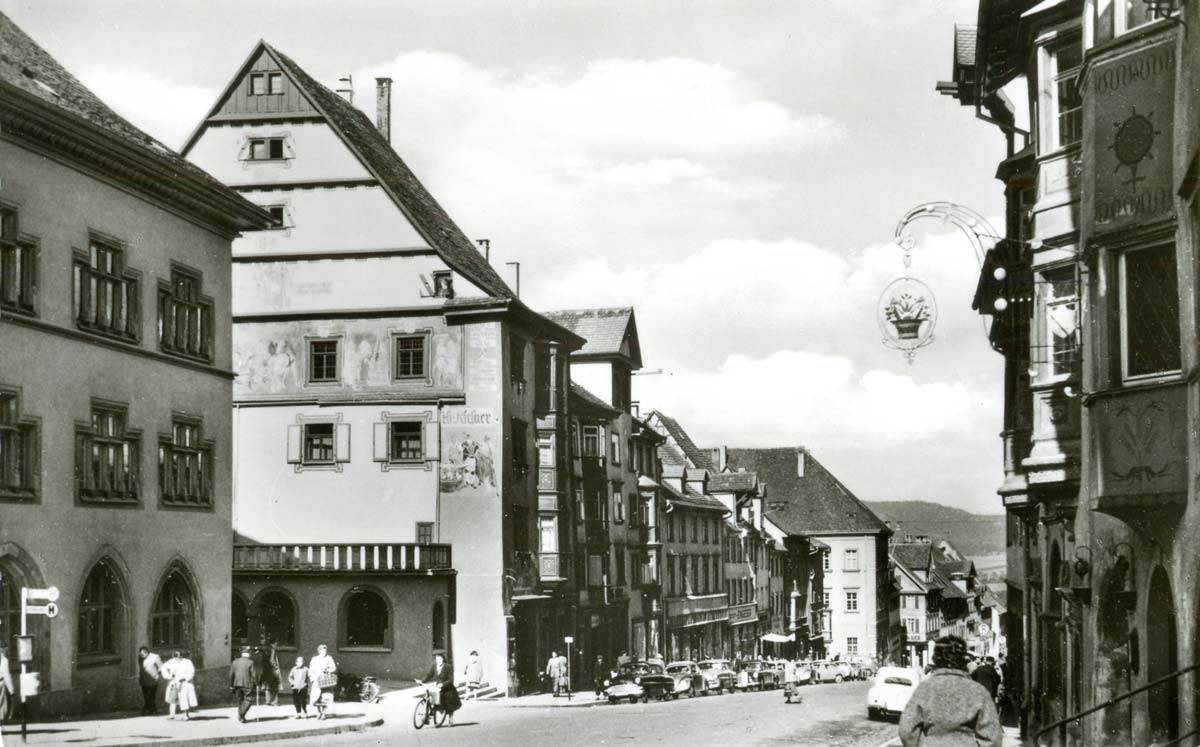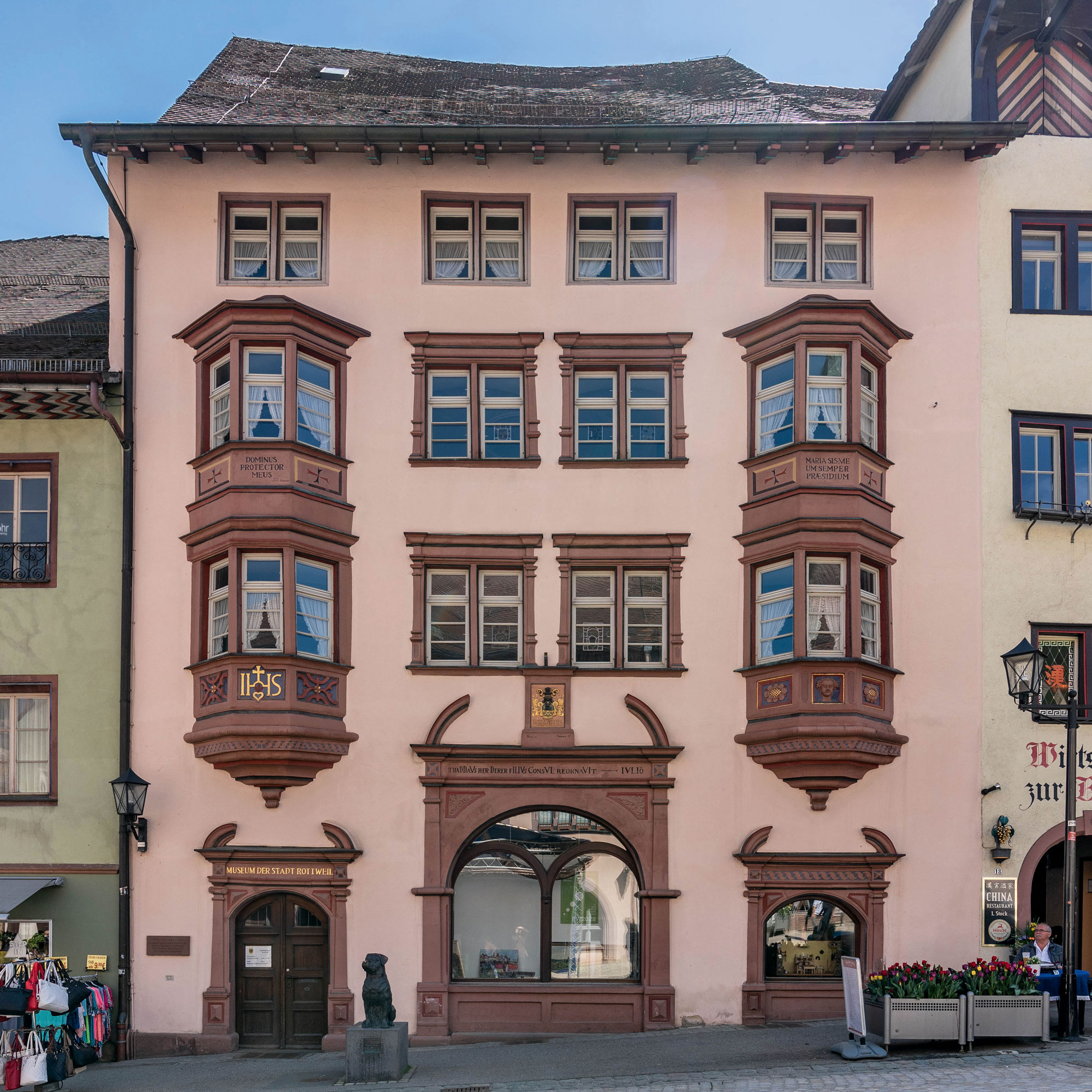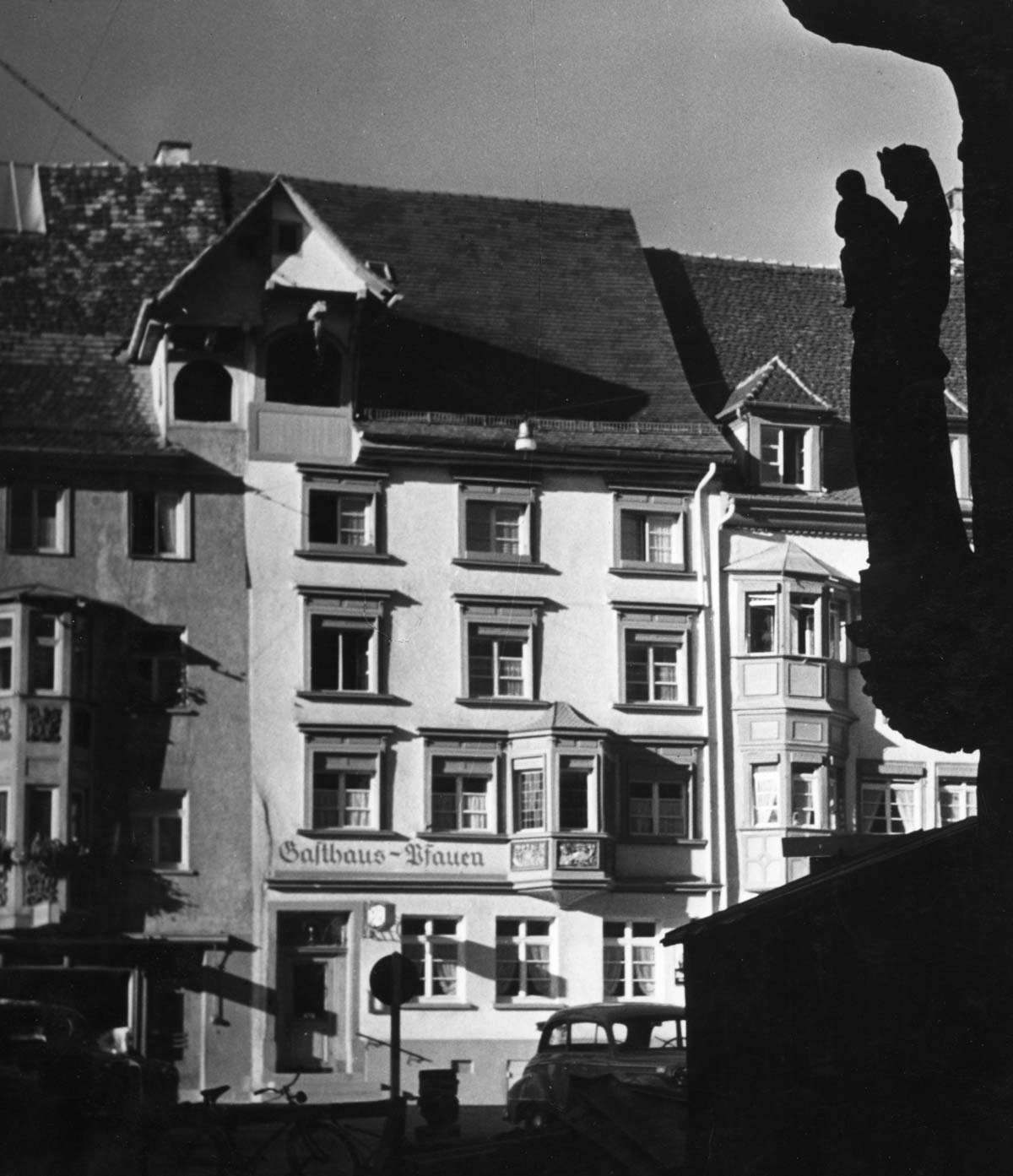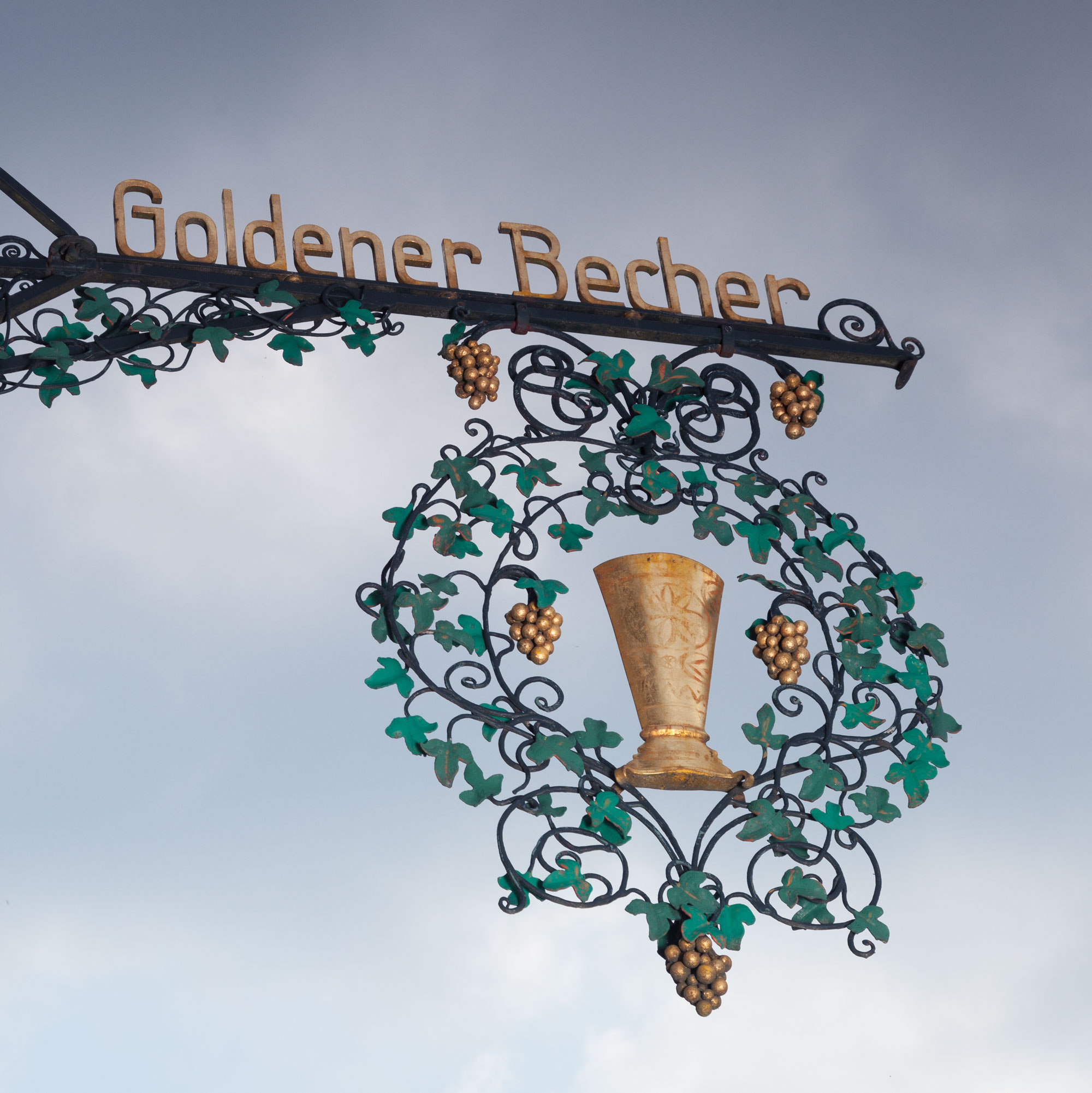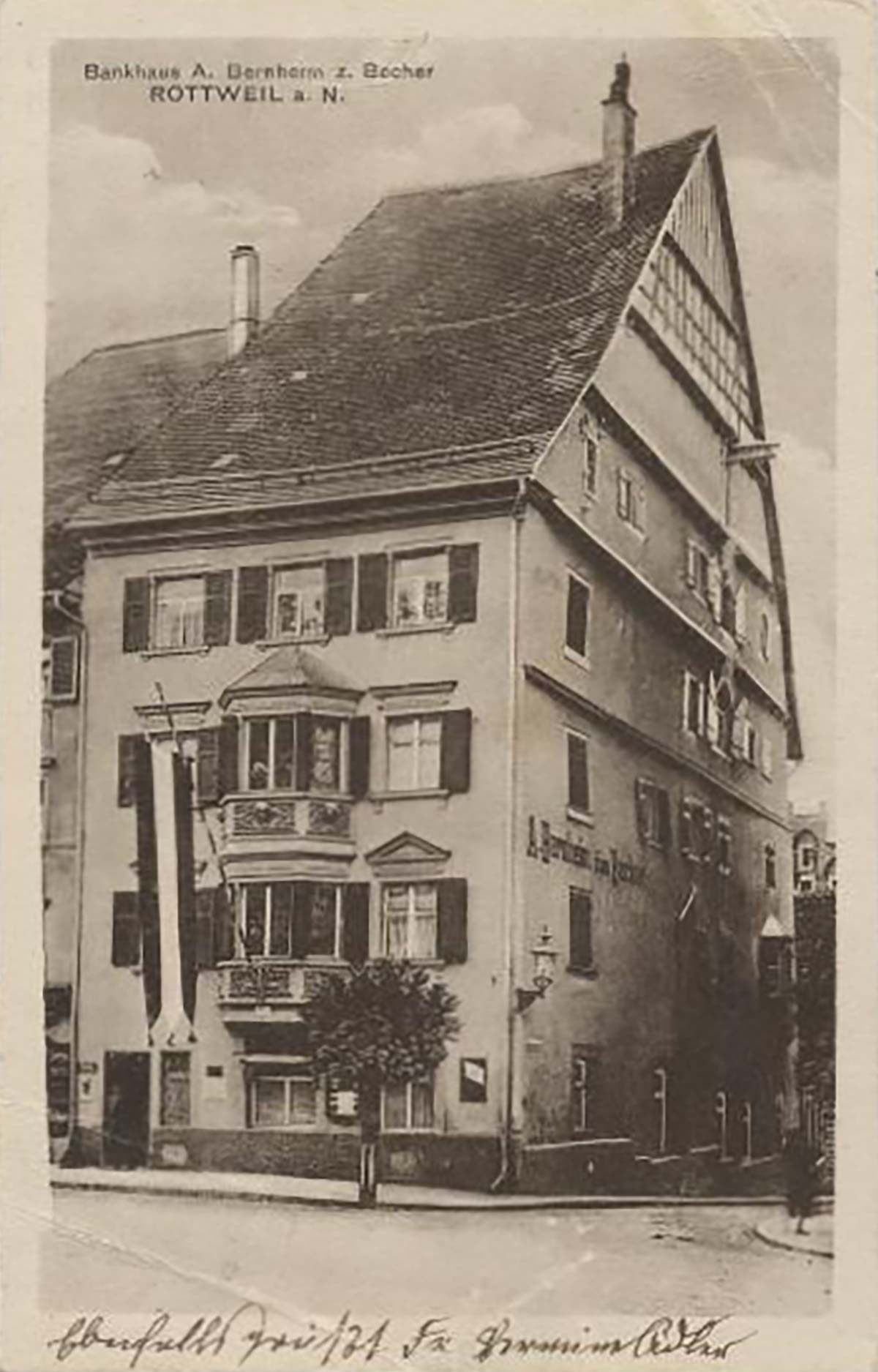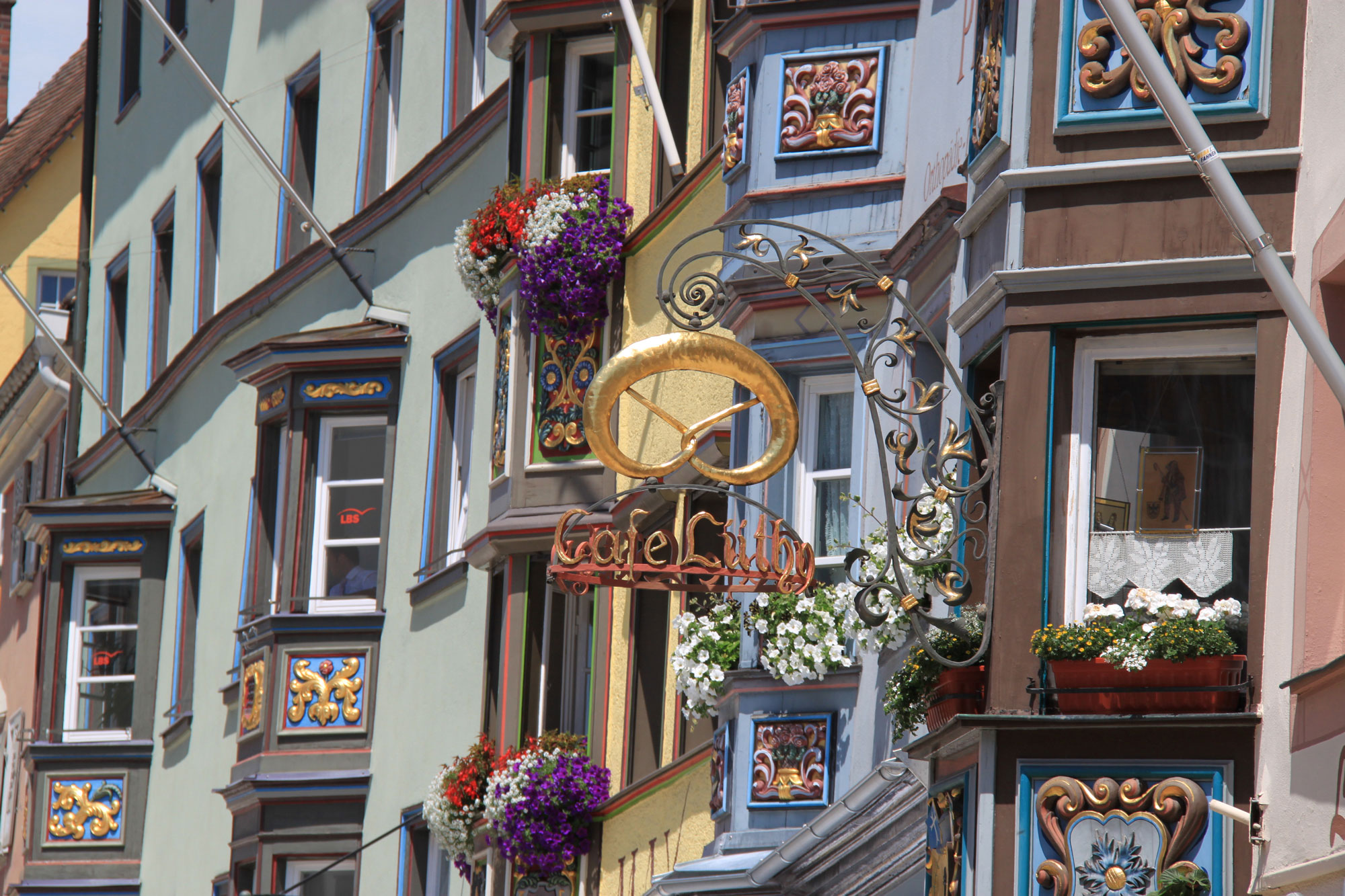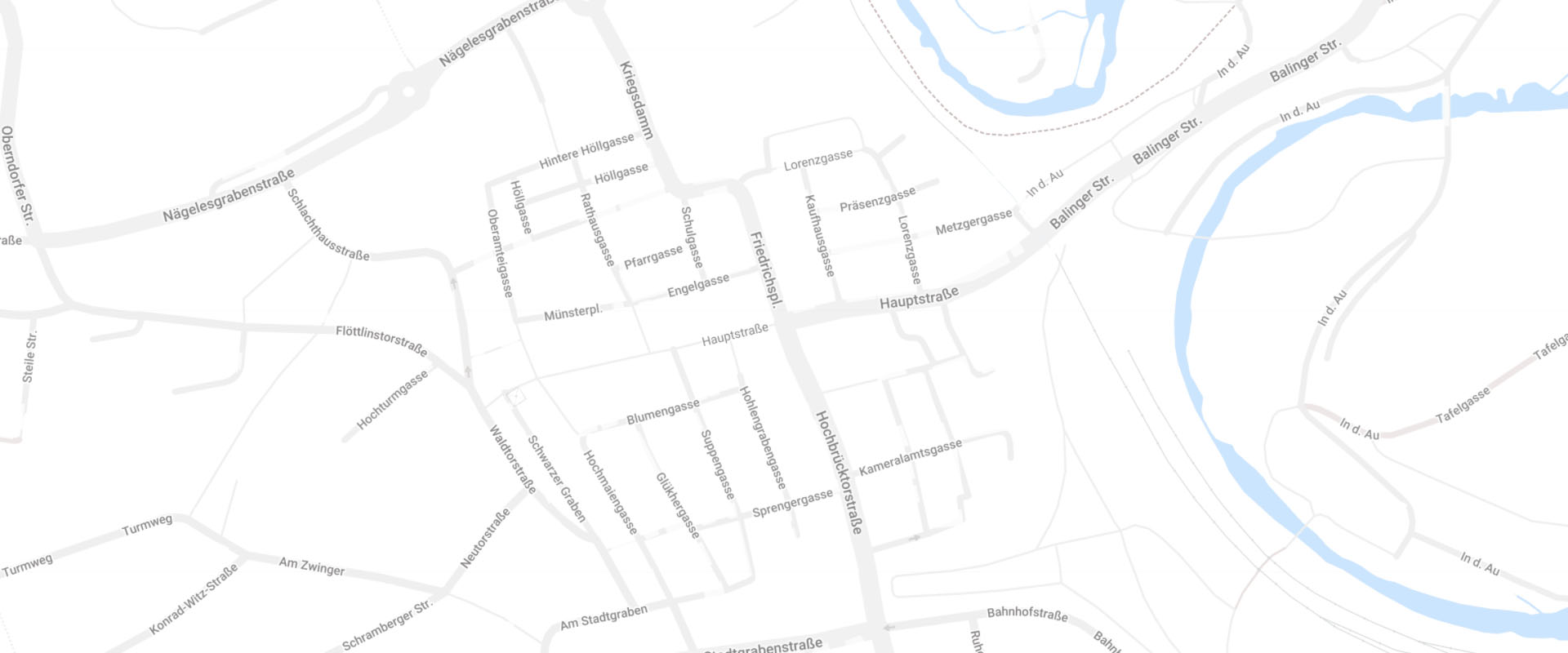Rottweil’s townscape is characterized by grand town houses with opulently decorated bay windows and coats of arms, their illustrations and symbols indicating a tavern or the trade practiced in the house. Walking through the town lanes, there is quite a bit to discover and decode when you stand in front of these houses.
Right next to the old town hall, there is a lavishly painted house. The scenes show aspects of everyday life in bygone Rottweil. You perceive the past owners of the house with their coats of arms – from the Lords of Bubenhofen, the Lords and Earls of Zimmern and the Khuons, to today’s owners Kirsner, who run a sports shop nearby. Gottfried Werner von Zimmern loved music. People often sang here, and the sound of pipes and the strumming of lutes were heard, something the locals did not always appreciate. Old Konrad Spreter felt compelled to complain to the town council about the “noise”.
In the 19th century, the house accommodated the inn “Zum Kronprinzen”. The name was chosen to remind people of the new ruling power in the Kingdom of Wurttemberg.
Opposite the town hall is the “Herdersche Haus”, now Rottweil’s town museum. It is named after the former landlord family Herderer that had appointed mayors and deputies in the past. The striking bay windows, covered with sayings and the sign of the cross, is a reminder of baroque piety in the 18th century.
Walking further down the street, to the crossroads, you will notice an advertisement painted on the house wall on the left. This is where Johann Georg Gerni ran his trading house in the 17th century. In the late 18th century, the house hosted the inn “Zum Kamel”, with its own brewery. The brewer’s star in the bay oriel is a reminder of this. The brewers painted the star on their barrels so that the beer would not go sour.
Walking further towards the Hochbrücke, the big bear on the right, marching above the pedestrians’ heads, reminds us of the inn “Zum Bären”.
At the bottom of the bay window, Gambrinus sits on a barrel marked with the letters § 11 which, in a nutshell, means “keep on boozing”.
The neighbouring “Pfauen”, with its magnificent peacock at the bottom of the bay window was a substitute for a tavern sign. It also used to be a brewery.
One of the owners, Max Bikard, had a couch put on the pavement – in wintertime – for his and the neighbour’s wife, so that they could keep up their incessant chatting more comfortably.
In the “Pfauen”, there was also a special spot where dignitaries could drink their glass of beer or wine undisturbed: that was called the “Holy Grave”.
Opposite the “Pfauen”, the “Goldener Becher” tempts visitors with an eminently appealing sign and a lavishly ornamented bay window from which the god Bacchus and his female attendants invite guests for a drink. In the 19th century, the “Becher” was in Jewish possession and also served as a bank. During the 1848 revolution, the women from Rottweil also played a major role, and Sophie Bernheim, the daughter of the Jewish banker Abraham Bernheim, made a passionate plea in the Rottweil newspaper for women to take part in the uprising.
Opposite the “Schwarzes Tor”, towards the west, Joseph Teufel acquired the house belonging to the Weber von Webersheim family. There he opened an inn. Teufel, which in English means “devil”, was known to be a joker and named his inn “Paradies”, in English “paradise”. The bay window shows a scene with Adam and Eve. In another panel, the lobster illustration symbolised that fish and other seafood were served here.
Many of the old inns do not exist anymore – new ones have come along. When Rottweil became the town of the Imperial Manorial Court, it had to provide accommodation and refreshments. At that time, the guilds had their taverns for eating and drinking and lodging, and the Catholic love of celebrating was also obvious because they patronised the taverns. And what would Carnival be without a place to stop for a bite or a drink!
